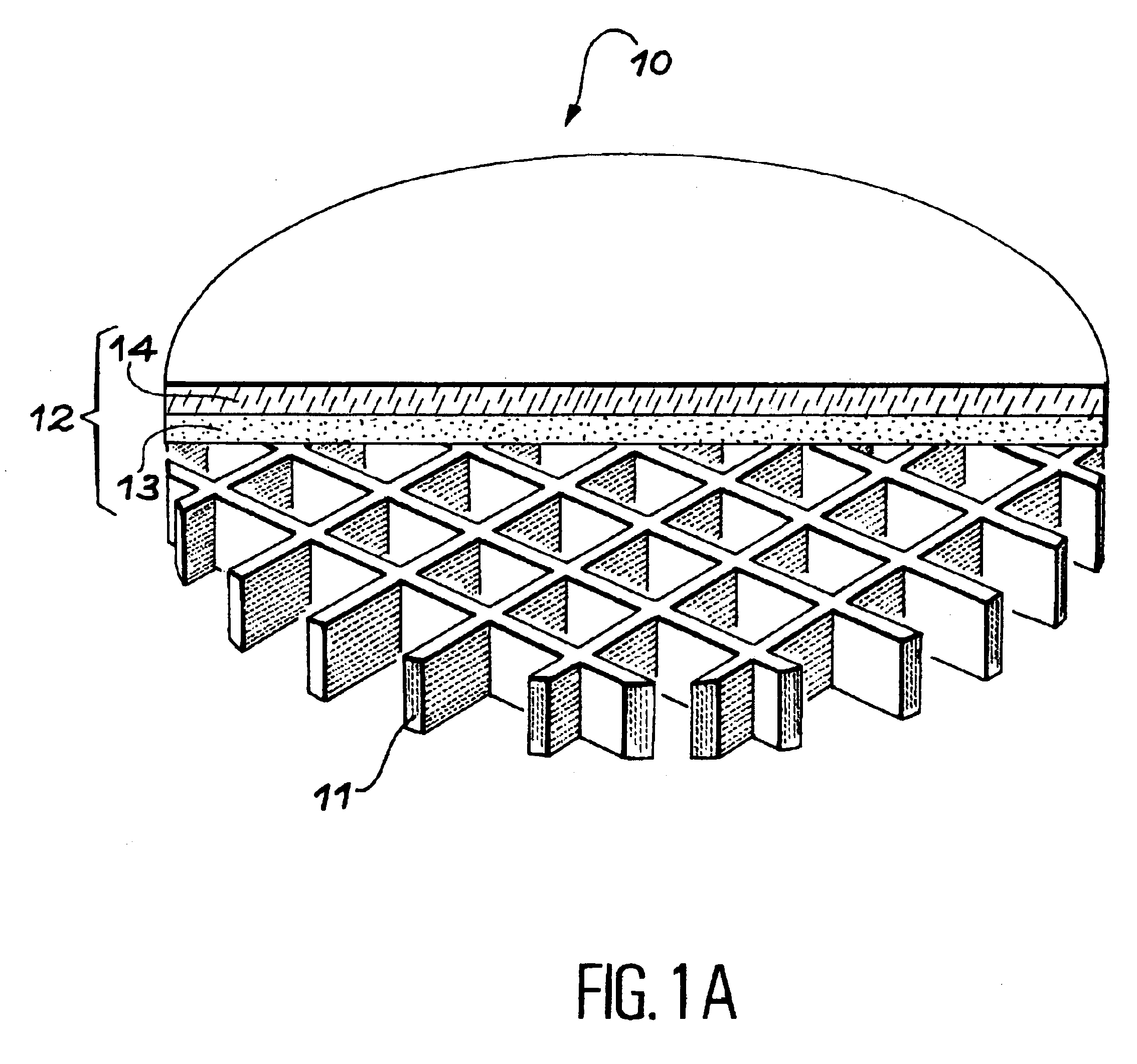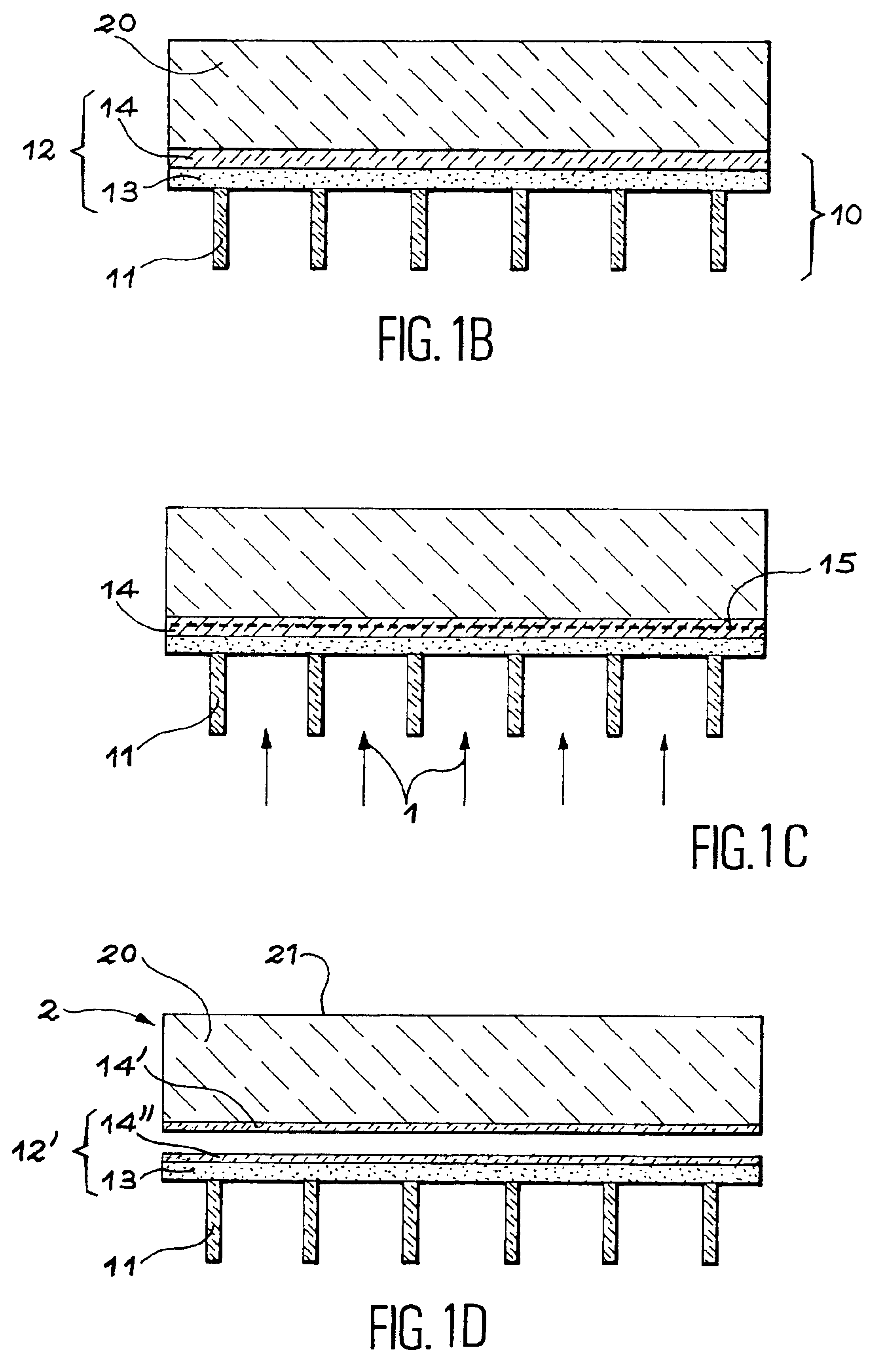Method for producing a thin film comprising introduction of gaseous species
a technology of gaseous species and thin film, which is applied in the direction of solid-state device manufacturing, electric devices, semiconductor/solid-state device manufacturing, etc., can solve the problems of limiting the thickness of the available thickness, causing disturbance, and supplementary presenting drawbacks
- Summary
- Abstract
- Description
- Claims
- Application Information
AI Technical Summary
Benefits of technology
Problems solved by technology
Method used
Image
Examples
Embodiment Construction
[0025]FIGS. 1A to 1D show an embodiment of the invention wherein the first part of the structure includes a grid.
[0026]FIG. 1A is a perspective and partial cross-section view of this first part 10. The first part 10 includes a grid 11 formed of bars which may be square or rectangular in cross-section. The bars are for example 80 μm wide and may be spaced out from a few hundreds of micrometers to a few millimeters. According to the dimensions of the bars and of the spacings which separate them, the grid may act as a stiffener and allow separation at the level of the implanted zone without inducing the formation of blisters.
[0027]When the spacings between the bars are too big and / or if the depth of penetration of the ions is not sufficient to induce a separation (blistering then occurs) and produce a self supporting film, after the implantation step a layer may be deposited which acts as a stiffener on the free face of the first part.
[0028]The grid 11 may be made by etching a Si or Si...
PUM
| Property | Measurement | Unit |
|---|---|---|
| thicknesses | aaaaa | aaaaa |
| thick | aaaaa | aaaaa |
| thick | aaaaa | aaaaa |
Abstract
Description
Claims
Application Information
 Login to View More
Login to View More - R&D
- Intellectual Property
- Life Sciences
- Materials
- Tech Scout
- Unparalleled Data Quality
- Higher Quality Content
- 60% Fewer Hallucinations
Browse by: Latest US Patents, China's latest patents, Technical Efficacy Thesaurus, Application Domain, Technology Topic, Popular Technical Reports.
© 2025 PatSnap. All rights reserved.Legal|Privacy policy|Modern Slavery Act Transparency Statement|Sitemap|About US| Contact US: help@patsnap.com



